|
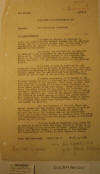 G-2
Report. 3,020-d. G-2
Report. 3,020-d.
NICARAGUA (Political-Military)
Subject: The Nicaraguan Situation.
From: M/A Nicaragua
Report No. 8
March 5, 1927
(a) INTRODUCTION:
I arrived at Corinto on February 21,
1927, and conferred with Admiral Latimer
and the American Consul, Mr. C. T.
Steger on same day. On February 22 I
accompanied the Admiral to Leon,
stopping off a few minutes at
Chinandega.
Chinandega was captured by the Liberals
on February 6 and recaptured by the
Conservatives on February 9. Twelve
square blocks of the business district
of the city were destroyed by fire. Each
army blames the other with the
responsibility for the conflagration.
I arrived at Leon on February 22, and
proceeded from there to Managua on
February 23. Leon was occupied on
February 22 by about 1,100 Conservatives
under General Saenz, but the garrison
has been reduced, as a result of the
arrival of the marines, to about 200
men.
A square consisting of 15 blocks in the
business center of Leon is enclosed by a
wire fence built down the center of the
streets. This fence is about six feet
high and consists of 9 barbed wires
stretched on heavy posts placed seven
feet apart. Every block or two there are
cross fences of same height and
material. A few small openings are
provided for the passage of troops and
other pedestrians. Some of the street
intersections are covered by combat
groups of about two squads armed with
machine guns (either Vickers-Maxim,
Lewie or Colts). The riflemen were armed
with Springfields, model 1898,
Remingtons and Mausers.
The headquarters of the U.S. Naval and
Marine forces of the Pacific aide is
located at Leon in the Lupone hotel.
This force consists of about 650 marines
and about 650 sailors and now is
distributed along the railroad from
Corinto to Granada, both inclusive, and
furnishing train guards and bridge
guards at sensitive points on the
railway.
Captain Clark H. Woodward, U.S. Navy, is
in command of this force and Major
Thomas S. Clark, U.S. Marine Corps, is
in command of the marines. His
headquarters at present is with Captain
Woodward.
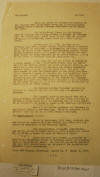 p.
2 p.
2
There are about 300 sailors and marines
on the Atlantic side distributed among
the following places: Bragmann Bluff &
Puerto Cabezas; Bluefields and El Bluff,
and Rama.
Six De Haviland planes for the Marines
with 10 officers and 82 men arrived at
Corinto on February 26. The planes were
landed there on the 28th and arrived at
Managua on March 1st, where there is a
fair landing field.
On February 22, 1927, the commanding
officer, U.S. Naval Forces Ashore,
Pacific Coast of Nicaragua, issued and
published a proclamation, or order,
directed to the Chief of the Liberal
Revolutionary Forces, prohibiting
fighting within 2,000 yards of the
railway and certain cities and towns
occupied by Naval Forces. A copy of the
order is enclosed herewith (enclosure
1).
This order has had the effect of
releasing a large number of the
Conservative forces from the garrisons
of the various cities and towns along
the railway, especially at Leon where
the garrison was almost immediately
reduced from 1,100 or 1,200 to about
200. The order has also served to give
the inhabitants of the localities
mentioned therein a sense of security
and has benefitted business to some
extent, but as business in all the
cities is dependent upon the prosperity
of the farmers and ranchmen outside the
2,000 yard zone whose property is not
protected by the order the effect of it
has not been as beneficial as would
appear at first glance.
The British warship “Colombo” arrived at
Corinto on February 26, but did not land
any sailors or marines.
The proposal made by President Diaz for
a treaty between the United States and
Nicaragua, referred to in Par. 2 of my
cable No. 1 of February 27, is fully
covered in report No. 6, March 4, under
3,850 (foreign relations).
Major C. B. Carter resigned and returned
to the United States a few days ago.
While he resigned, it is probable that
he did so to avoid being discharged.
(b) CONSTABULARY (6,100)
Major D. Rodriguez, U.S. Army, retired,
who was second in command to Major
Carter, has taken over his duties as
commander of the National Guard.
The organization, strength, composition
and status of the National Guard is
fully covered by report No. 5, March 4,
under the head of “National Guard.”
There has been very little opportunity
to follow the prescribed course of
training since the organization of the
National Guard. The men are carefully
selected and very well disciplined, and
in general the organization presents a
good appearance.
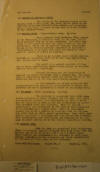 p.
3 p.
3
(c) HEALTH OF AMERICAN FORCES
The health of the American forces on the
Pacific side is very good, but about 50%
of those on the Atlantic Coast have
suffered from malaria and dysentery.
This is also true of native troops sent
from the Pacific to the Atlantic Coast.
(d) ORGANIZATION – (Conservative Army)
6,100-a
Major General José Solorzano Diaz,
nephew of the President, is Chief of
Staff of the Army, and is chief military
adviser to the president. His staff
consists of one secretary with the rank
of Colonel and two assistants. There are
14 generals actually commanding troops
in the various stations indicated in
enclosure 2 “distribution of troops”,
but there are numerous other generals
acting as second in command.
There is no general staff and no
administrative and technical staff as we
know them and nothing that corresponds
to them.
The staff of a general consists of from
one to three secretaries, whose duties
appear to be principally those of a
secretary.
General officers may and frequently do
command any number of troops from a
hundred up. The generals of departments
operate under the direct orders of the
President and he is the only
coordinating agency.
As the commands are widely scattered and
communications are very poor,
coordination is almost impossible and as
we understand it there is practically
none.
(e) INFANTRY – Rifle companies. 6,100-a
The Infantry is organized into rifle
companies composed of three officers and
100 men. The rifle companies are divided
into detachments of from 15 to 20 men
for purposes of meaning and for
convenience in providing detached posts
and outposts. They are called
“peletones”, and correspond to our
platoon but appear not to be employed as
a combat unit. Three or four women
usually accompany a peleton to cook and
wash for the men and serve them in other
useful capacities. Four rifle companies
constitute a battalion and four
battalions a brigade. This organization
into battalions and brigades is not
always strictly adhered to by the
various commanding generals.
(f) MACHINE GUNS
Machine guns are organized into
detachments. These detachments vary in
strength from 5 or 6 men with one
machine gun to 20 or 25 with 2 or 3
machine guns. These machine gun
detachments are attached to rifle
companies, according to the situation
and their availability at the rate of 2
or 3 guns to 200 riflemen.
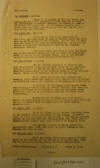 p.
4 p.
4
(g) CAVALRY – 6,100-a
There is no cavalry in the true sense,
but horses and mules are commandeered
when they can be found and detachments
of mounted infantry, consisting of from
15 to 50 men, are organized. As the
animals receive very little care and
only such forage as they can rustle,
they soon become unserviceable.
(h) ARTILLERY – 6,100-a
There are no artillery organizations.
There are, however, about 51 guns of
various makes and calibers up to 77 mm
here in the arsenal. All of them are
obsolete and about 41 of them are
unserviceable. There are 636 rounds of
artillery ammunition on hand in the
arsenal, condition unknown.
Some individual guns were used in the
fighting on the Atlantic Side, and some
of these are now in the hands of troops
on the western coast. One or two old one
pounders were in position in Leon on
February 23.
(i) AIR SERVICE – 6,100-a
The Air Service consists of three second
hand observation planes (commercial
type) and two American pilots, Major W.
C. Brooks and Major L. S. Mason, both of
whom hold commissions in the Aviation
Section of the National Guard. There are
no enlisted men in the Air Service.
While these planes are not equipped for
bombing, three bombs were dropped from
them on Liberal troops at Filadelfia
during the fighting at Chinandega on
February 9.
A shipment of 100 twenty pound aerial
bombs was recently received from the
United States. Upon test the fuses were
found to be defective, but the defective
fuses have been replaced by improvised
ones and the bombs made serviceable.
Majors Brooks and Mason are good pilots.
Their principal employment has been in
reconnaissance missions but in the
future they certainly will be given
bombing missions also.
(j) SMALL ARMS – 6,550-b
There are about 10,000 rifles including
those in the arsenal and in the hands of
the troops. Probably 7,000 or 8,000 of
those are serviceable. 500 new
Springfield rifles and 500 new carbines
(Springfield) mod. 1898, and 50
Vickers-Maxim machine guns were received
in January, 1927.
The greater portion of these rifles are
Springfield, Mod. 1898, but 2,000 or
3,000 Remington and Mausers are also in
use.
(k) MACHINE GUNS – 6,550-b
There are about 150 machine guns
including those in the arsenal and in
the hands of the troops. This 150 is
made up of Colts, Lewis and
Vickers-Maxim guns.
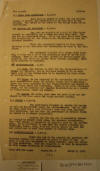 p.
5 p.
5
(l) SMALL ARMS AMMUNITION – 6,550-b
Four million rounds of rifle and one
million rounds of machine gun ammunition
are on hand here in the arsenal. The
amount in the hands of the troops could
not be ascertained.
(m) UNIFORM AND EQUIPMENT – 6,550-a
The uniform consists of a suit of blue
denim overall or coveralls, and a straw
hat with blue band. The men are not
furnished shoes. Those who have shoes
wear them, but practically all the
soldiers are barefooted or wear
improvised sandals.
While the prescribed uniform is blue
denim, clothing of all character and
description is worn by the soldiers.
The equipment consists of a cheap light
blanket, a rifle and a cloth bag
containing from 50 to 150 cartridges.
Many of the men wear pistols of various
makes and calibers, but these are mostly
their private property. Most carry
machetes or cutaches.
(n) TRANSPORTATION – 6,600
(A) Rail. The railway is used for the
transportation of troops and supplies,
but as the area served by it is very
small many of the troops have to be
supplied by other means of
transportation.
(B) Motor. On the outbreak of the
revolution the Government commandeered
about 150 private trucks and
automobiles. These are being employed
for the transportation and supply of
troops where roads are available. There
is no motor transport corps, and the
machines are rapidly deteriorating as a
result of inexperience, abuse and
misuse.
(C) Animal. Ox carts, pack oxen and pack
mules are employed on the poor roads and
rough mountain trails.
(o) SUPPLY – 6,500-a.
The government attempts to supply its
troops as well as practicable under the
circumstances. Due to lack of roads this
was a very difficult task even when
supplies were available, and now that
the government is without funds or
credit it is almost impossible.
Rations for the men are of necessity
obtained locally in almost every sense,
but whenever practicable, the local
supply is augmented by supplies sent by
the government. It is difficult to say
what the ration consists of. Tortillas,
beans, rice, beef and native cheese is
what the men prefer and is what they
strive to furnish them.
(p) HOSPITALIZATION – 6,500-a
Under the law of the country all
graduates and licensed doctors are
required to serve in case of war. As
many of them have attempted to evade
service, they are drafted when
necessary. They are required to do duty
in hospitals or with troops according to
requirements.
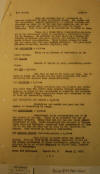 p.
6 p.
6
Sick and wounded men are evacuated to
nearest hospitals by most convenient
means. One doctor and two assistants,
usually pharmacists or medical students
are attached to every 200 or 300 men
when separate, and at the rate of 1
doctor and 2 assistants to 1,000 in
larger commands. Such first aid as is
practicable is given by them.
There is a Green Cross organization
supported by the Government which is
operating a government hospital in
Managua. In addition to this there is a
ladies aid society in Managua and other
cities, the members of which serve
without compensation. These ladies
personally care for and nurse the sick
and wounded soldiers. The government
provides hospitals, medical supplies,
etc.
(q) SANITATION – 6,100-a
There is no attempt at sanitation by the
field forces.
(r) HEALTH
Health of troops is good, considering
conditions.
(s) PAY – 6,200-e
The rate of pay is 30 cents per day. Due
to lack of funds the troops are not paid
regularly and this naturally has created
some dissatisfaction.
(t) TRAINING – 6,700-a
Neither officers nor men receive any
training other than the little they
acquire through experience. Nothing is
known of the principles of security and
information and nearly every engagement
comes as a surprise to one or both of
the contending forces.
(u) DISCIPLINE AND MORALE – 6,300-b.
Discipline and morale are poor and the
number of desertions is large.
(v) RECRUITMENT – 6,240-b
Recruitment is by conscription and is
for the period of the war. There is no
standard age or physical fitness. Young
boys and old men are taken almost
regardless of age. These conscripts are
brought to Managua where they are
equipped, organized into detachments of
from 100 to 200 men and sent out to some
of the Conservative Armies. They receive
no training whatsoever.
(w) LIBERAL FORCES (Revolutionists) –
3,020-d
Very little is known about the Liberal
forces. General José Maria Moncada,
secretary of war of the Sacasa
government is their outstanding general.
He is supposed to be at either Matiguas
or Tierra Azul, Department of Matagalpa.
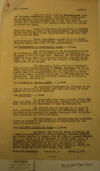 p.
7 p.
7
They are armed with the Russo-Mexican
rifle and Thompson sub-machine guns.
They have no artillery and no airplanes.
They are supposed to have more mounted
troops than the Conservatives due to the
fact that they are located in a section
of the country where there are plenty of
horses and mules.
Their organization and training is
probably about the same as that of the
Conservatives. Their uniform is the same
as that of the Conservatives, except
that they have a red hat band.
Their recruitment is said to be
voluntary enlistment and conscription.
Their morale is probably slightly higher
than that of the Conservatives.
(x) DISTRIBUTION OF CONSERVATIVE FORCES
– 6,180-a
The distribution of the Conservative
forces as of February 26th is enclosed
herewith as enclosure 2. It shows a
total of 6,704 men. However, the
Minister of War admitted to me that
5,000 men was about all they had in the
army. Of this 5,000 about 500 are
mounted infantry, which they refer to as
cavalry.
The government forces have been
concentrating against general Moncada on
Muymuy, Matiguas and Tierra Azul,
Department of Matagalpa, for the past
week. It is expected that this
concentration will be completed in about
one week, when a decisive engagement is
contemplated by the government. The
location of these forces, as of March 4,
is shown on enclosure 3.
(y) STRENGTH OF LIBERAL FORCES – 3,020-d
The government estimates the strength of
the Liberal forces to be between 1,500
and 2,000 men, of which number 600 are
mounted infantry.
(z) ACTIVITIES – 3,020-d
No engagements have been reported within
the past ten days, except an unimportant
skirmish which occurred near Telion in
the department of Leon on February 28.
The Liberal general Parajon who is said
to have retreated into Honduras after
the Chinandega fight is reported to be
preparing to invade Nicaragua from the
north. This report has not been
confirmed.
The Government is concentrating all
available forces as stated in 2nd
paragraph of sub-heading (x) and shown
on enclosure 3.
(aa) OVERTURES LOOKING TO PEACE –
3,020-d
On March 2 the Liberal Party of Managua
sent a committee consisting of Antonio
Medrano, Mariano Arguelle and Carlos
Morales to confer with the Liberal
general Moncada who is reported to be at
Matiguas or Tierra Azul, Dept. of
Matagalpa, and ascertain whether or not
he will consider entering into
negotiations for the conclusion of
peace. This committee was accompanied by
Major Thomas S. Clark, U.S. Marine Corps
and Lieutenant Moran, U.S. Navy.
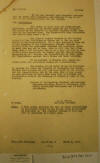 p.
8 p.
8
No one can foretell what Moncada’s
attitude will be toward this committee,
but whatever it may be it will be the
deciding factor for the present.
(bb) CONCLUSIONS
The forces on both sides are
undisciplined, untrained, poorly led and
poor organized and equipped. The morale
of the Liberals is probably slightly
higher than that of the Conservatives.
The Conservative army outnumbers the
Liberal army about 3 to 1.
The Liberal General Moncada is the
leading general of the revolutionary
forces and is the one most feared by the
Conservatives. He is more aggressive
than any of the generals of the
Conservative forces. Moncada is waiting
until the government exhausts its
resources, which he must know cannot be
long, when he will take the offensive,
gain a few victories and be in a good
position to conclude a peace acceptable
to himself and the Liberal Party.
Meanwhile he will harass the
Conservatives by small raids and
depredations against their forces and
their property.
It is doubtful if Moncada will remain
inactive while the government forces are
concentrating.
The landing of our naval forces in
Nicaragua to protect the lives and
property of foreigners has accomplished
that mission and has been beneficial to
the country and the Conservatives, but
at the same time it has caused as much
criticism as would have been true of
straight out intervention without the
blessing of restoring peace to the
country.
Sources of information: Personal
observation, American Legation, Major D.
Rodriguez, USA, ret’d, Nicaraguan
Government and reliable informants.
3 encls.
A. W. Bloor,
Military Attaché.
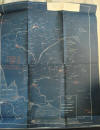 Note: A blue print, covering the zone in
which concentration of government forces
is now taking place is attached as
enclosure 4. The original tracing of
this map will be forwarded at a later
date. Note: A blue print, covering the zone in
which concentration of government forces
is now taking place is attached as
enclosure 4. The original tracing of
this map will be forwarded at a later
date.
[click on
thumbnail for a serviceable digital
image of this "blue print"]
United States National Archives, College
Park MD, Record Group 165, Entry 77, Box
2660.
Transcribed by Nicholas J. Quadrini.
|

